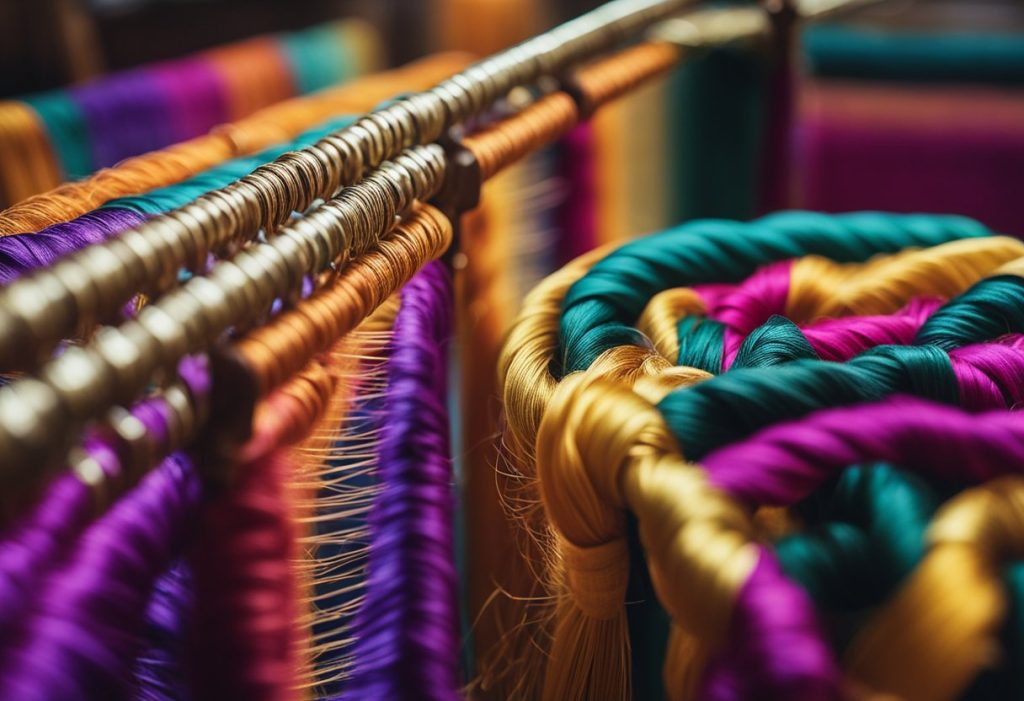Weaving is an intricate art form that has been passed down through generations in many Southeast Asian cultures. From the vibrant silk ikat fabrics of Indonesia to the intricate brocades of Thailand, each region boasts its own unique weaving traditions and techniques. In this article, we’ll explore the rich tapestry of traditional weaving in Southeast Asia, delving into the history, materials, and cultural significance of this ancient craft.
Indonesia: Ikat and Batik
Indonesia is renowned for its stunning ikat textiles, which feature intricate patterns created through a resist-dyeing process. The ikat technique involves dyeing the weft or warp threads before weaving, resulting in mesmerizing blurred patterns. The islands of Java, Bali, and Sumatra are particularly famous for their ikat fabrics, each with its own distinct motifs and color palettes.
Another iconic Indonesian textile art is batik, a wax-resist dyeing technique that dates back to the 17th century. Intricate designs are drawn with wax on fabric, which is then dyed, creating intricate patterns once the wax is removed. Batik is not only a textile art but also a symbol of Indonesian cultural identity.
Thailand: Silk Weaving and Brocades
Thailand’s weaving traditions are deeply rooted in its rich history and are closely tied to the country’s royal courts. The silk weaving industry in Thailand dates back to the Ayutthaya period (1351-1767), with intricate patterns and designs reflecting Buddhist and Hindu influences.
One of the most celebrated Thai textiles is the brocade, a richly patterned fabric featuring supplementary weft threads. Thai brocades are famous for their intricate floral and mythical motifs, often incorporating gold and silver threads. These luxurious fabrics were traditionally reserved for royalty and religious ceremonies.
Vietnam: Ethnic Minority Weaving
Vietnam’s diverse ethnic minority groups have developed a rich tapestry of weaving traditions, each with its own distinct styles and techniques. The Hmong people, for instance, are renowned for their vibrant and intricate embroidery and batik work, featuring geometric patterns and intricate motifs.
The Cham people, an ethnic minority in central Vietnam, are known for their unique ikat weaving, which incorporates symbolic motifs and bold colors. Their textiles are not only functional but also play a significant role in religious ceremonies and cultural traditions.
Malaysia: Songket and Pua
In Malaysia, the art of weaving is closely intertwined with the country’s rich cultural heritage. Songket, a traditional brocade textile, is a prime example of Malaysian weaving excellence. This intricate fabric features metallic threads woven into silk or cotton, creating intricate floral and geometric patterns.
Another notable Malaysian textile is pua, a type of brocade featuring supplementary weft threads. Pua textiles are often used for traditional Malay clothing, such as the baju kurung and sarong.
Materials and Techniques
Traditional weaving in Southeast Asia employs a variety of materials, each with its own unique properties and cultural significance. Silk, cotton, and metallic threads are among the most commonly used fibers, with each region having its own preferred materials and dyeing techniques.
The table below compares some of the key materials and techniques used in traditional Southeast Asian weaving:
| Region | Materials | Techniques | Notable Textiles |
|---|---|---|---|
| Indonesia | Cotton, silk, metallic threads | Ikat, batik | Ikat, batik |
| Thailand | Silk, metallic threads | Brocade weaving, supplementary weft | Brocades, mudmee |
| Vietnam | Silk, cotton, hemp | Ikat, batik, embroidery | Hmong embroidery, Cham ikat |
| Malaysia | Silk, cotton, metallic threads | Brocade weaving, supplementary weft | Songket, pua |
While the materials and techniques may vary, the essence of traditional weaving in Southeast Asia lies in the intricate patterns, vibrant colors, and deep cultural symbolism woven into each piece.
Preserving a Living Heritage
Despite the advent of modern technology and mass-produced textiles, traditional weaving techniques in Southeast Asia have managed to endure, thanks to the efforts of artisans, cultural organizations, and government initiatives. Many regions have established weaving centers and cooperatives to support these ancient crafts and ensure their transmission to future generations.
Read Also: Exploring the Vibrant World of Southeast Asian Textiles
In Indonesia, for instance, the Taman Mini Indonesia Indah (Beautiful Indonesia Miniature Park) in Jakarta showcases the diverse weaving traditions from across the archipelago, providing a platform for artisans to showcase and sell their work.
Similarly, in Thailand, the Queen Sirikit Museum of Textiles in Bangkok celebrates the country’s rich textile heritage and promotes the preservation of traditional weaving techniques.
Weaving a Sustainable Future
As the world becomes increasingly conscious of the environmental impact of mass production, traditional weaving techniques offer a sustainable alternative. Many Southeast Asian weavers employ natural dyes and fibers, reducing the carbon footprint of their craft.
Moreover, the revival of traditional weaving practices has provided economic opportunities for rural communities, empowering artisans and preserving age-old skills. Organizations like the Asian Development Bank have supported initiatives to promote sustainable and ethical textile production in the region.
Read Also: Sustainable Fashion: Traditional Weaving Techniques in Southeast Asia
A Tapestry of Culture and Identity
Traditional weaving in Southeast Asia is much more than just a craft; it is a living embodiment of cultural identity, passed down through generations. Each intricate pattern, vibrant color, and ancient technique tells a story of the region’s rich history, beliefs, and traditions.
As we embrace globalization and modernity, it is crucial to preserve and celebrate these age-old weaving traditions. By supporting local artisans and promoting sustainable practices, we can ensure that the vibrant tapestry of Southeast Asian weaving continues to be woven for generations to come.

